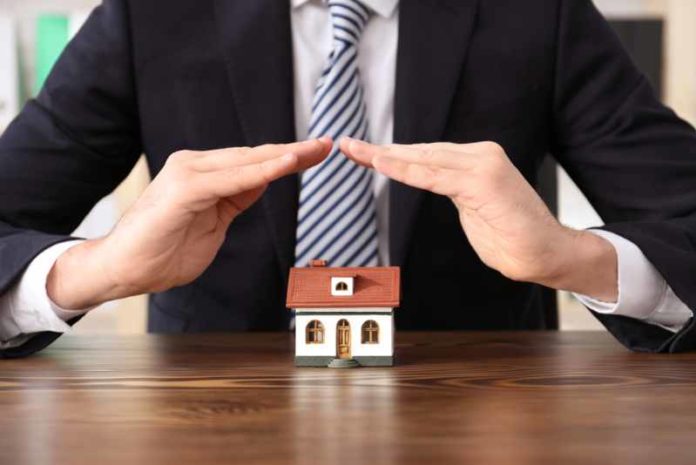By Meghan Belnap
A business property is an extension of the hardworking people who cultivate their livelihoods on the premises. For better and worse, it mirrors the values and work ethic the ownership, managers and employees pour into what they do. Consequently, that inseparable extends to what an on-site accidental injury conveys about a company’s standards for safety and the well-being of anyone who does business on their grounds. Mindfulness of business property liability and the havoc it can bestow on a company’s reputation, financial stability and legal standing is essential to every successful business enterprise. Here are a few elements to consider, whether for fall, winter, or the upcoming summer.
Slip, Trip and Fall Hazards
Slip, trip and fall accidents account for a dependably large annual percentage of workplace deaths, according to yearly OSHA statistics. Fortunately, they also happen to rank among the most easily preventable occupational safety issues. Here are a few safety methods to consider.
- Keep all walking areas dry to massively reduce the chances a pedestrian slips, trips and fall. Place signs warning of a slippery surface and clean any spills as quickly as possible before anyone can walk through them. False floors, platforms, mats and waterproof footgear will also help to keep employees and customers safe.
- Since pedestrians can sometimes become a bit oblivious to their surroundings, keep walkways and hallways as clear of obstacles as possible. It pays to think ahead about occasions when people might be on their phone, pushing or carrying heavy objects, focused on conversations and otherwise distracted.
- A dimly lit workspace can be particularly hazardous, especially to those with trouble seeing in poor lighting. Workers are far more likely to lose their footing when they cannot see objects or spills in their paths. Ensure that all parts of your establishment are well lit for both the customers and the employees.
Falling Objects
When large or heavy objects are stored in high places or when loose items are unsecured, it can lead to injury when they impact or trip up passing pedestrians. In order to protect employees and pedestrians from injury and to be OSHA compliant, Install toeboards at least 3.5 inches high and flush to the surface on all guardrails to stop objects from falling to the level below and apply plywood panels or screening to guardrails if materials will be piled higher than 3.5 inches. If working over an open grating, install non-slip plywood or similar material to the top of the grating to stop small falling objects. Block exclusion zones and hoisting areas where workers are not allowed with overhead protective structures or barricades below the work area and label these areas with clear signage indicating entry is prohibited.
In addition to these measures, workers should never be made to lift, lower or swing any load over someone’s head. In fact, as indicated above, lifting and lowering areas should be clearly labeled and blocked off entirely, but equipment operators should always be aided by a signaler to direct movements if the operator’s view should be obstructed at any time. As general housekeeping is concerned, tools and other materials should be stacked and secured on flat surfaces far from edges, railings and any elevated area.
Parking Lot Safety
Parking lot safety goes beyond keeping parking lots clear of ice and snow during the winter, though the importance of habitually laying down salt and shoveling walkways can never be overstated. Business property owners can actually reduce their accident risks starting from the design phase of their lots. For instance, many parking lots aim to control traffic patterns with angled spaces, but 90-degree parking aisles offer more time to accommodate reversing vehicles, cut down traffic conflicts and generally improve efficiency by allowing drivers to proceed through the lot at comparatively higher speeds. Meanwhile, ideal frontage roads connecting parking structures should include speed-controlling features such as pedestrian crossing signs and speed bumps to keep drivers aware of foot traffic. Raised islands at the end of parking rows maintain ideal pedestrian and driver visibility by preventing parking in unauthorized areas and naturally slowing drivers down as they travel the lot.
Professional Advice
When mitigating the risks of injury on your worksite, it’s generally best to consult with a professional. A slip-and-fall attorney is well-versed in accident litigation and knows well what is required of companies in order to reduce liability in the event of an accident. Of course, it also pays to have a quality legal mind at your disposal in the event you ever do have to argue business property liability in court. Having one on retainer can help especially when your business operates in areas of turbulent weather conditions that could increase the overall risk of slip and falls incidents on your site.
It is an owner’s duty to head off as many accidents as possible. Things happen, of course, and not everything can be prevented. However, taking the proper steps to avoid negligence in the care of your facility and those within it will reduce your liability and save your company money and reputation in the long run.
Meghan Belnap is a freelance writer who enjoys spending time with her family. She loves being in the outdoors and exploring new opportunities whenever they arise. Meghan finds happiness in researching new topics that help to expand her horizons. You can often find her buried in a good book or out looking for an adventure. You can connect with her on Facebook right here and Twitter right here.
Business property liability stock photo by Africa Studio/Shutterstock







